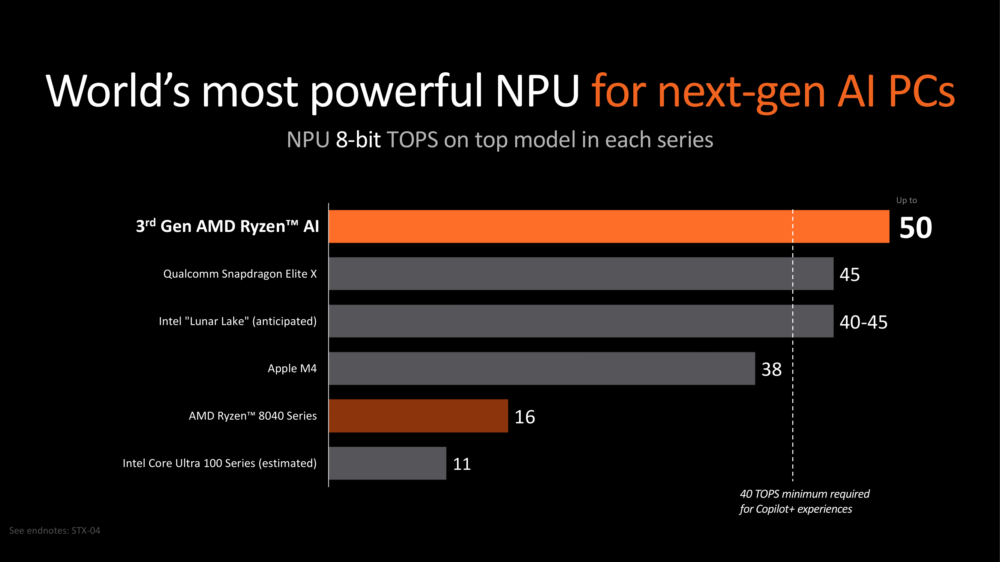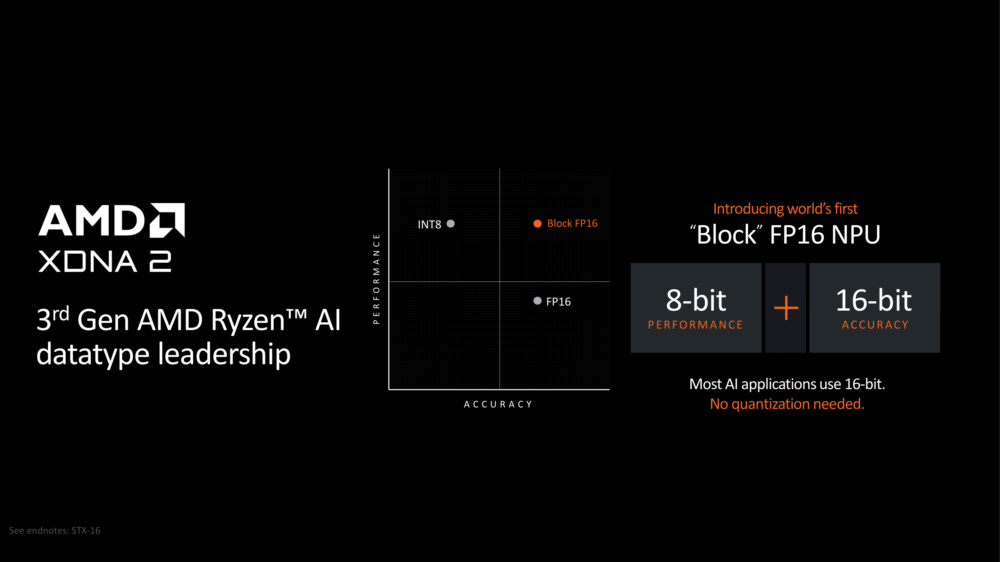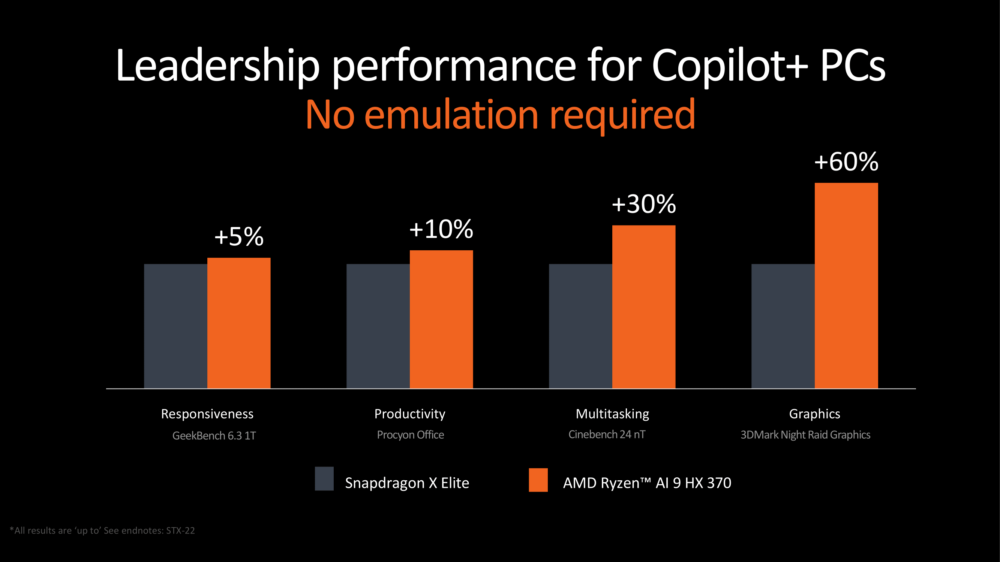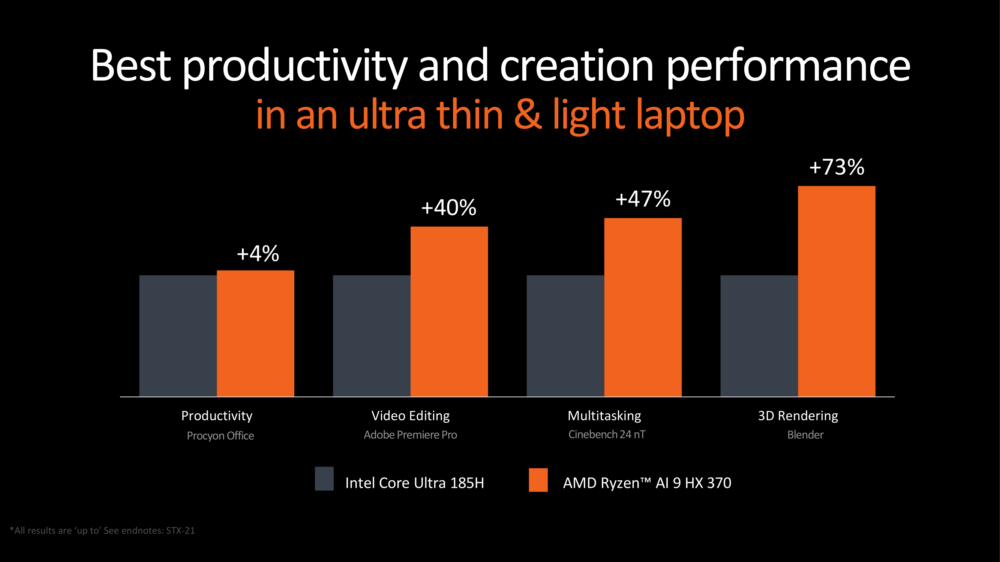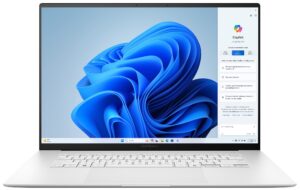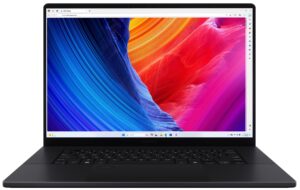AMD Launches the Ryzen AI 300-Series of AI-Powered SoCs With Two New Ryzen 9 Chips
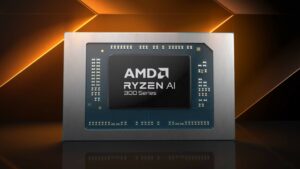 A combination of a Zen 5 processor and RDNA 3.5 Graphics are the makings of AMD’s new Ryzen AI 300 SoC. Despite the head-scratching naming scheme, the chips look pretty good, offering a high core count with what looks like a new powerful iGPU and an NPU that more than meets the requirements for Microsoft’s new Copilot+ PC initiative.
A combination of a Zen 5 processor and RDNA 3.5 Graphics are the makings of AMD’s new Ryzen AI 300 SoC. Despite the head-scratching naming scheme, the chips look pretty good, offering a high core count with what looks like a new powerful iGPU and an NPU that more than meets the requirements for Microsoft’s new Copilot+ PC initiative.
The new XDNA 2 architecture provides more than 50 TOPS (trillion operations per second) of performance. The TDPs also appear to favor more thin & light notebooks, as well as more powerful machines, with a wide range between 15W and 54W. Keep in mind that this is an SoC, which means that it can power a whole laptop by itself. ASUS has already revealed some designs for laptops utilizing these SoCs, including a 14-inch TUF Gaming laptop, which has us very intrigued.
Specs Table
These new AMD chips break away from the traditional 8-core or 6-core layout, offering 10-core and 12-core processors. There are two types of cores: regular Zen 5 and new Zen 5c, which stands for compact. Think of them as the performance and efficiency cores that Intel has, with the caveat that all cores come with 2 threads, which should improve performance.
| AMD Ryzen AI 300 Series Mobile Processors (Zen 5/Strix Point) | |||||||
| Cores | Base Frequency | Turbo Frequency | L3 Cache | Graphics | NPU | TDP | |
| Ryzen AI 9 HX 370 | 4x Zen 5 8x Zen5c (24 Threads) | 2.0GHz | 5.1GHz | 24 MB | Radeon 890M 16 CU | XDNA 2 (50 TOPS) | 15-54W |
| Ryzen AI 9 365 | 4x Zen 5 6x Zen5c (20 Threads) | 2.0GHz | 5.0GHz | 24 MB | Radeon 890M 12 CU | XDNA 2 (50 TOPS) | 15-54W |
The 50 TOPS of performance come with using the INT8 quantization, which is usually what lower-powered AI models use. This is ahead of both the Apple M4, the Snapdragon X Elite, as well as the rumored Intel Lunar Lake chips, all of which hover around the 40-45 TOPS of power.
However, AMD has done something rather smart, introducing the Block FP16 feature. This is a way of getting the accuracy of FP16 with the speed of INT8 format. Given that most AI-apps use 16-bit architecture, there will be no need for further quantization when running these apps on the new chips, improving performance over the competitors.
Of course, AMD needed to show some performance comparisons against the Snapdragon X Elite and the Intel Core Ultra CPUs, just to get some sweet bragging rights. Keep in mind that since this is an x86 chip, you don’t need to emulate apps and can enjoy the full-fledged Windows experience. However, Windows on ARM is getting there each day, and Qualcomm won’t be sitting at home and not improving.
Against the Intel Core Ultra 7 185H, this new high-powered AMD SoC seems to be better at everything. But, have you seen any efficiency benchmarks shown here? We know we haven’t, and we’re sure that AMD would have shows un a ton if the efficiency is as good as the performance. This is probably where both the Snapdragon and the Intel Ultra chips have AMD beat, however, we will have to wait until we’ve got the devices in our hands.
All laptops with the AMD Ryzen AI 9 HX 370:
All laptops with the AMD Ryzen AI 9 365:
